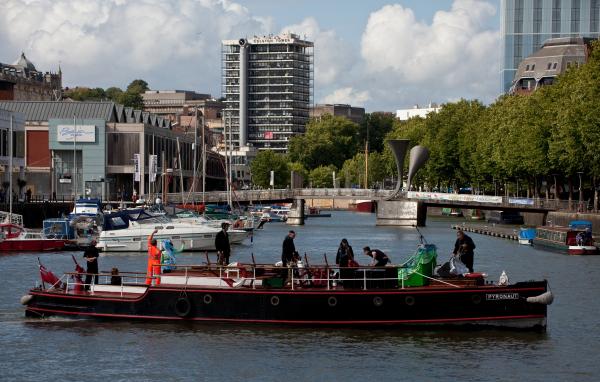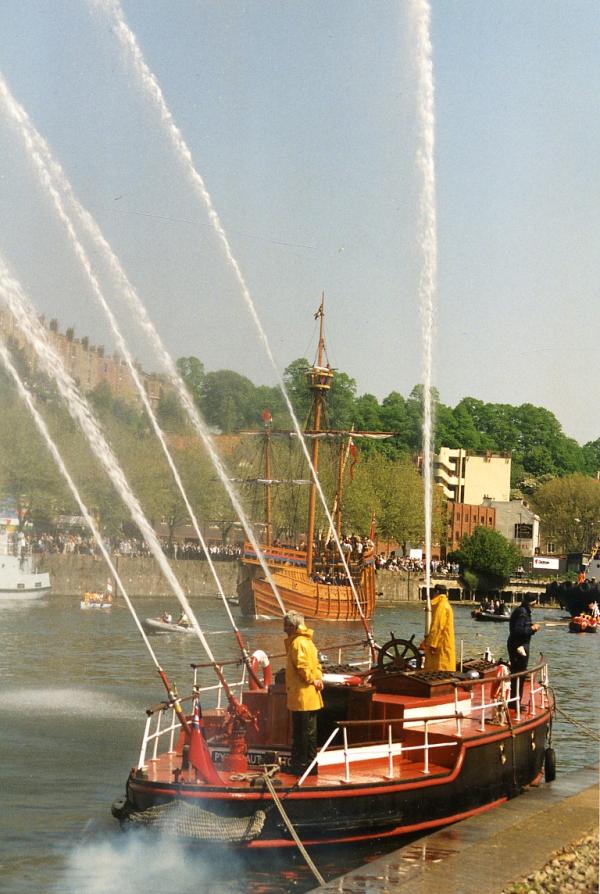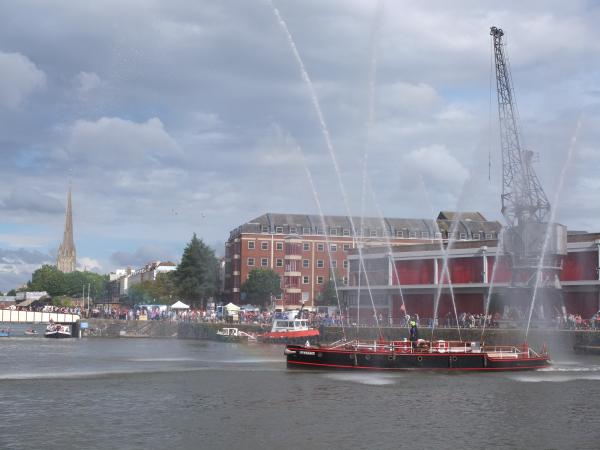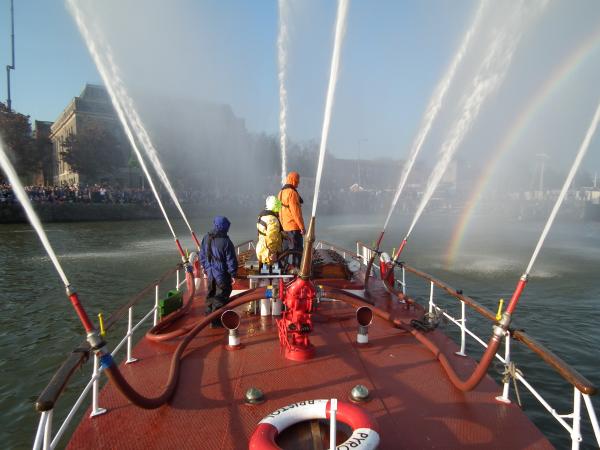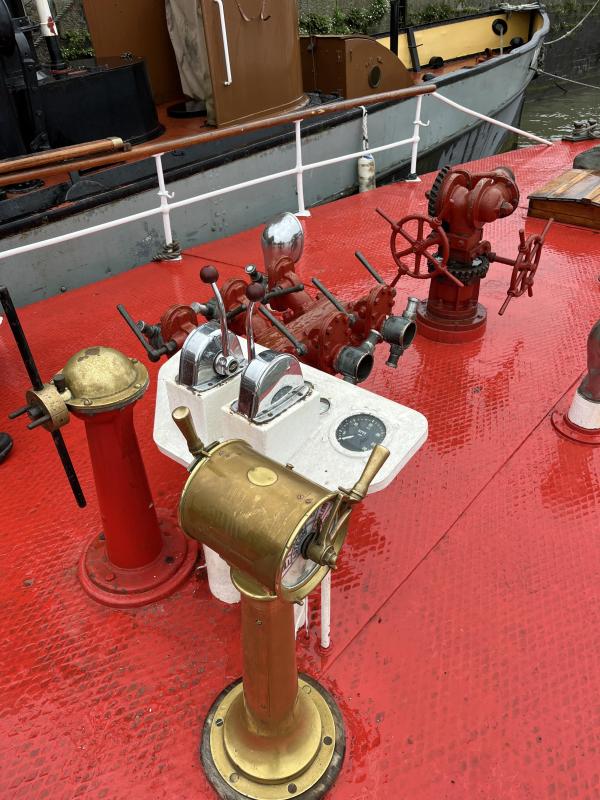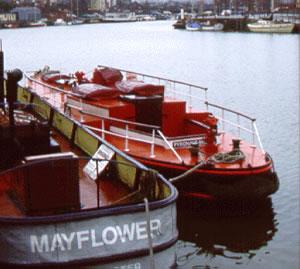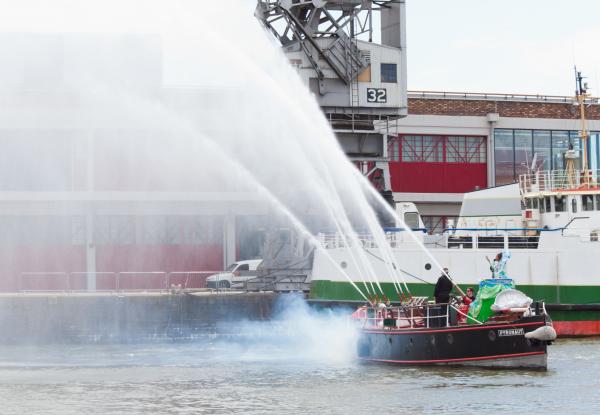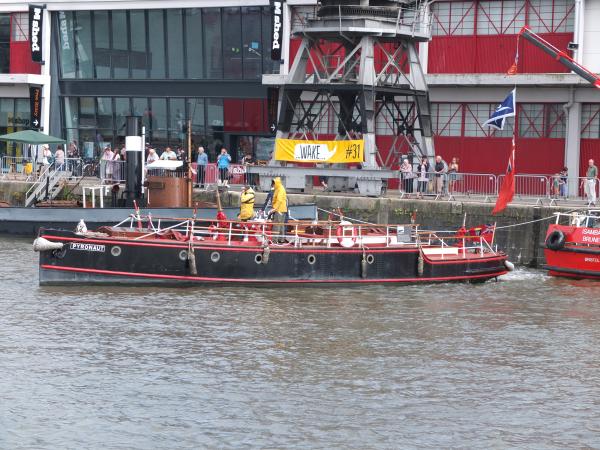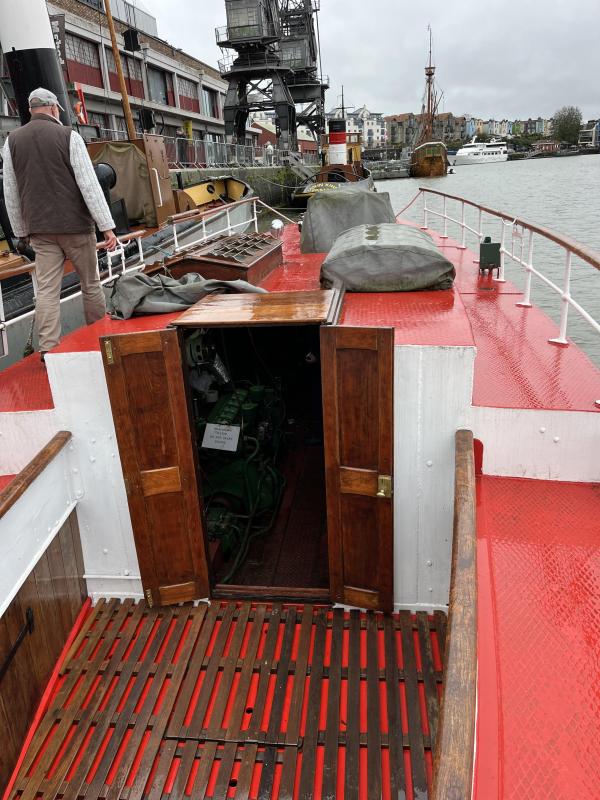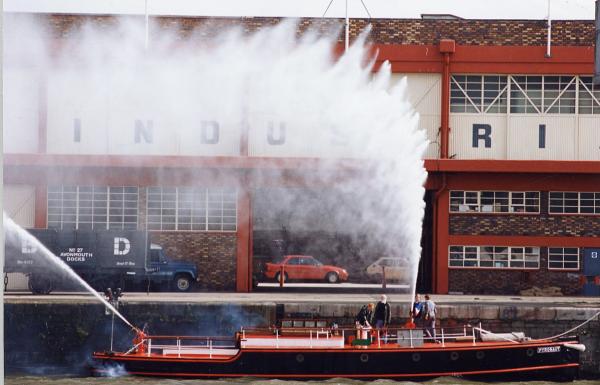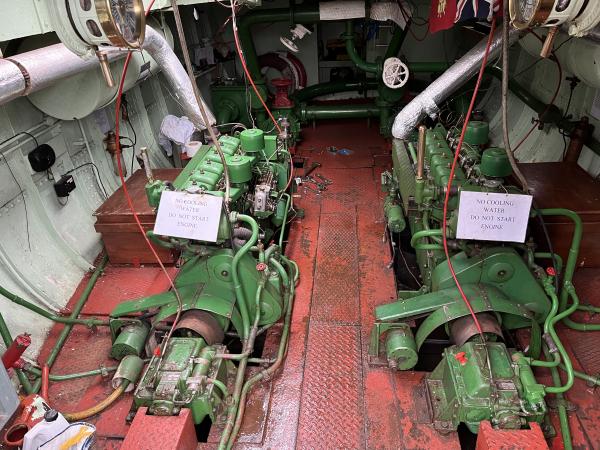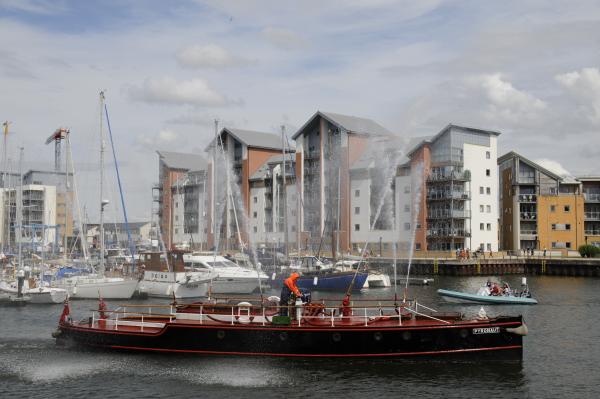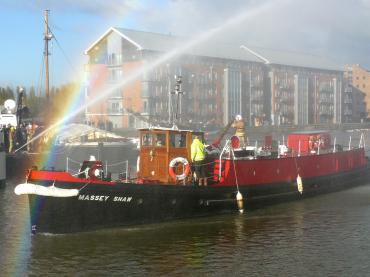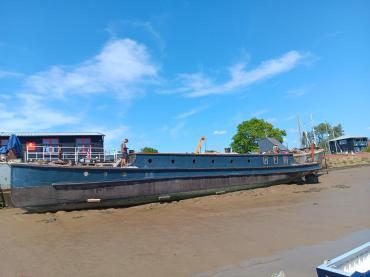

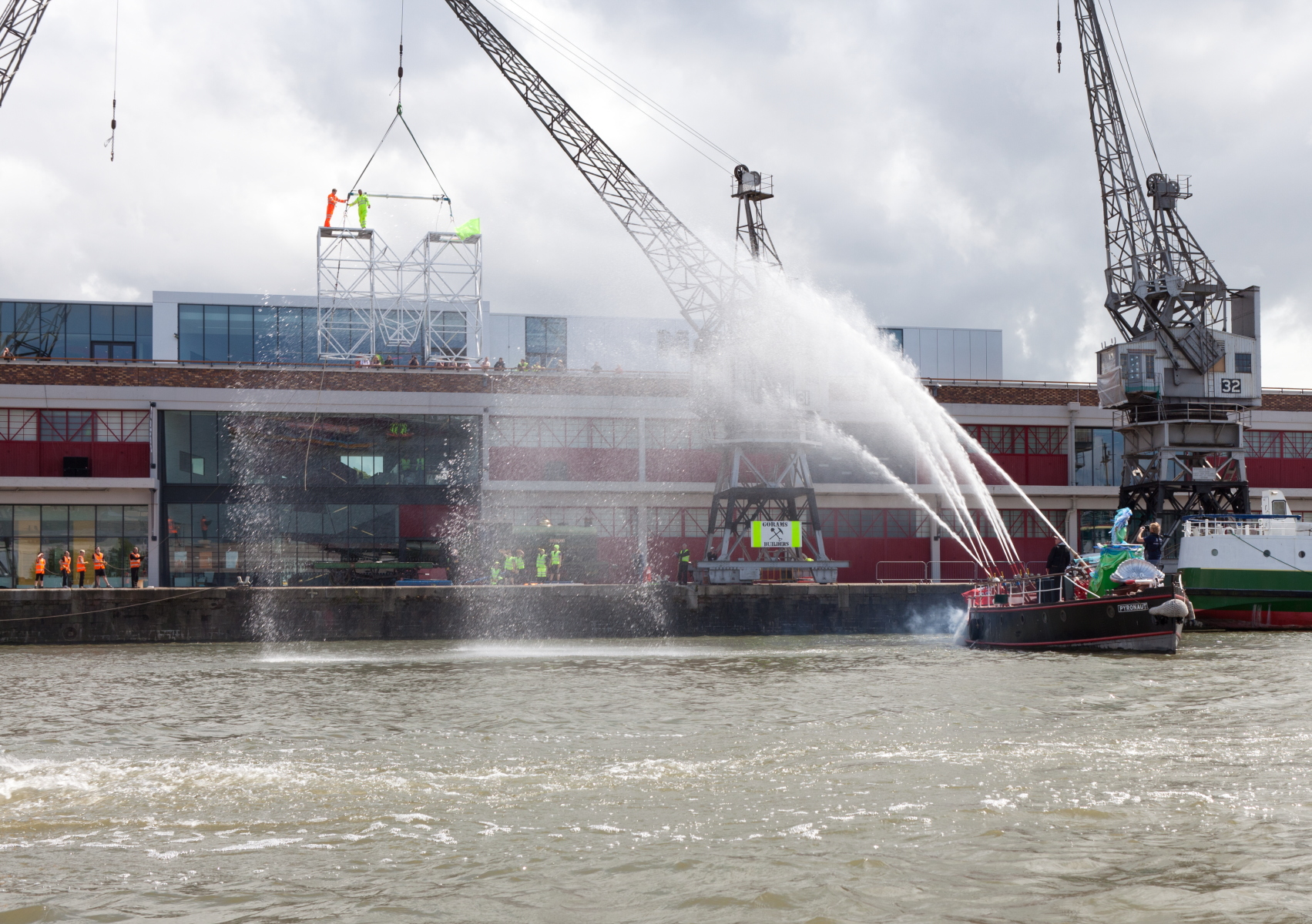
Previous names
- 1934 - 1938 Bristol Pheonix II
Details
Construction
Dimensions
History
PYRONAUT was ordered by Bristol City Council for fire-fighting in City Docks. She was crewed by 3 firemen, including an engineer stationed in the engine-room.
During the first two years of her life, PYRONAUT attended major fires at Robbins’ timber yard, Charles Hill’s shipyard and William Butler’s tar distillery at Crews Hole. She attended many major fires in Bristol during the Second World War. As cargo trade shifted progressively from City Docks to Avonmouth, PYRONAUT would also motor down the Avon to fight fires there too.
Her original Petter Atomic oil engines and Merryweather 3-cylinder reciprocating pumps were replaced by Ruston Hornsby oil engines and Coventry Climax centrifugal pumps during an extensive refit carried out by Charles Hill in 1968-9.
The decline in shipping activity from Bristol to Avonmouth prompted Bristol Fire Service to withdraw PYRONAUT in 1973. Pumps and fire-fighting equipment were removed when the vessel was sold to the Port of Bristol Authority for use at Avonmouth as a diving boat. When this conversion was abandoned, PYRONAUT passed to a private owner who reinstated all the pumps and monitors, intending to use her in Southern Ireland. Shortly before completing the conversion, he sold her in 1989 to Bristol City Museum & Art Gallery. The purchase and subsequent restoration were supported by the Science Museum’s PRISM Fund.
Source; John Robinson, Advisory Committee, March 2009.
Key dates
-
1934
Built by Charles Hill & Sons Ltd and named BRISTOL PHOENIX II
-
1934-1938
Attended major fires around Bristol Harbour
-
1938
Renamed PYRONAUT
-
1939-1945
Attended many major fires during Second World War in Bristol and Avonmouth
-
1945
Returned to peacetime duties
-
1948
Extinguished a major fire at the Hippodrome Theatre
-
1949
Extinguished a serious fire in wastepaper stacks at St Anne’s Board Mill
-
1950
Pumped water from the City Docks to extinguish a serious fire at Rowe Bros lead works warehouse
-
1951
Helped to extinguish the most serious peacetime oil fire at Avonmouth Docks, pumping water continually for two days
-
1952
Fought a dangerous fire aboard M V STANHEIM in the City Docks
-
1968/69
Her original Petter Atomic oil engines and Merryweather 3-cylinder reciprocating pumps were replaced by Ruston Hornsby oil engines and Coventry Climax centrifugal pumps during an extensive refit carried out by Charles Hill
-
1973
The decline in shipping activity from Bristol to Avonmouth prompted Bristol Fire Service to withdraw her from service
-
1976
Pumps and fire-fighting equipment were removed when the vessel was sold to the Port of Bristol Authority for use at Avonmouth as a diving boat
-
1983
When this conversion was abandoned, she passed to a private owner who reinstated all the pumps and monitors
-
1989
Shortly before completing the conversion, he sold her to Bristol City Museum & Art Gallery. The purchase and subsequent restoration were supported by the Science Museum’s PRISM Fund
-
2011
Currently exhibited in the inner harbour at Bristol Docks
-
2012
Vessel selected for Queen's Diamond Jubilee Pageant on 3 June 2012
Sources
Brouwer, Norman J, International Register of Historic Ships, Anthony Nelson, Edition 2, 1993
Classic Boat: 1,000 Boat Pageant - Forces vessels and lifeboats, June 2012
King, A, Technology Sheet 14 Fire Float Pyronaut 1934, City of Bristol Museum and Art Gallery
Own this vessel?
If you are the owner of this vessel and would like to provide more details or updated information, please contact info@nationalhistoricships.org.uk

